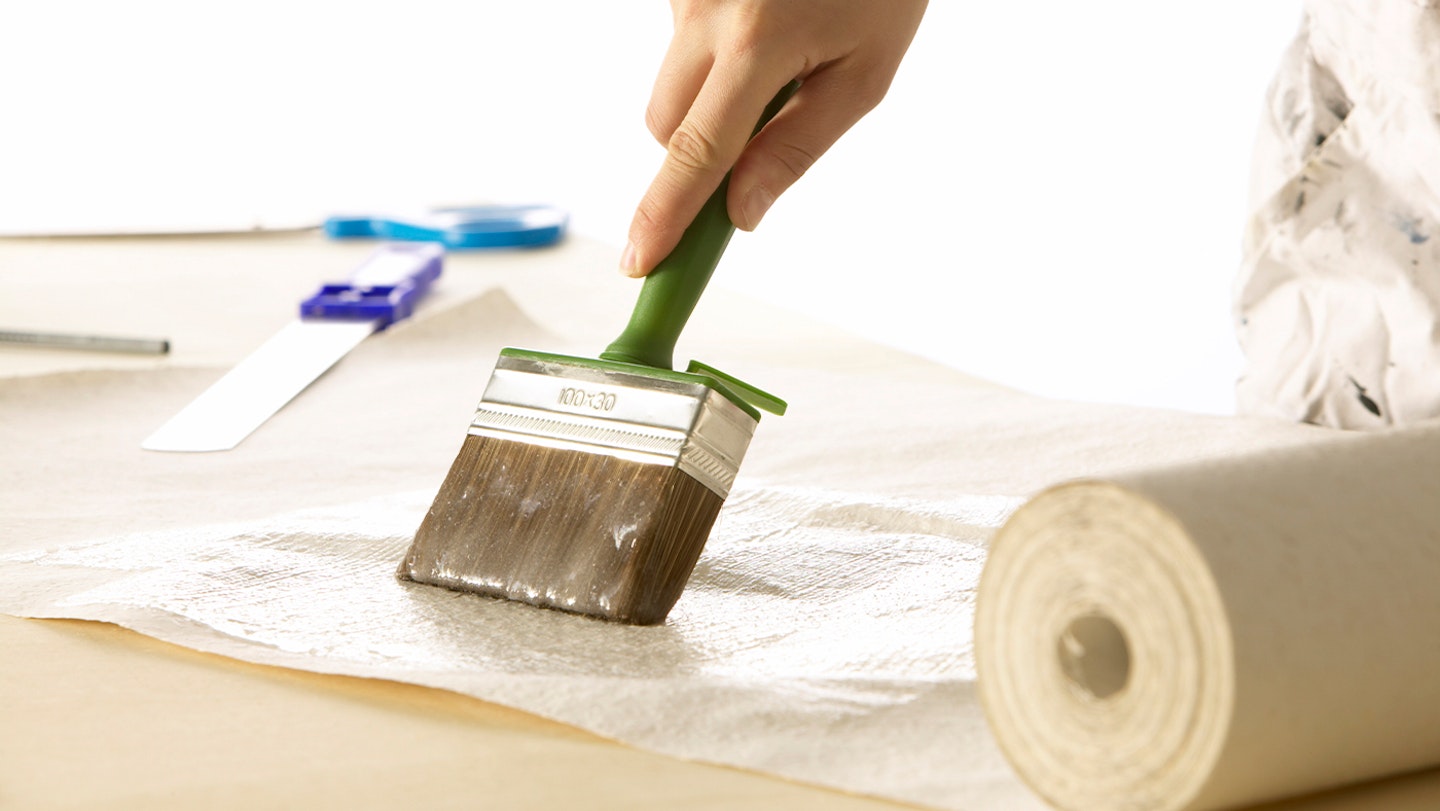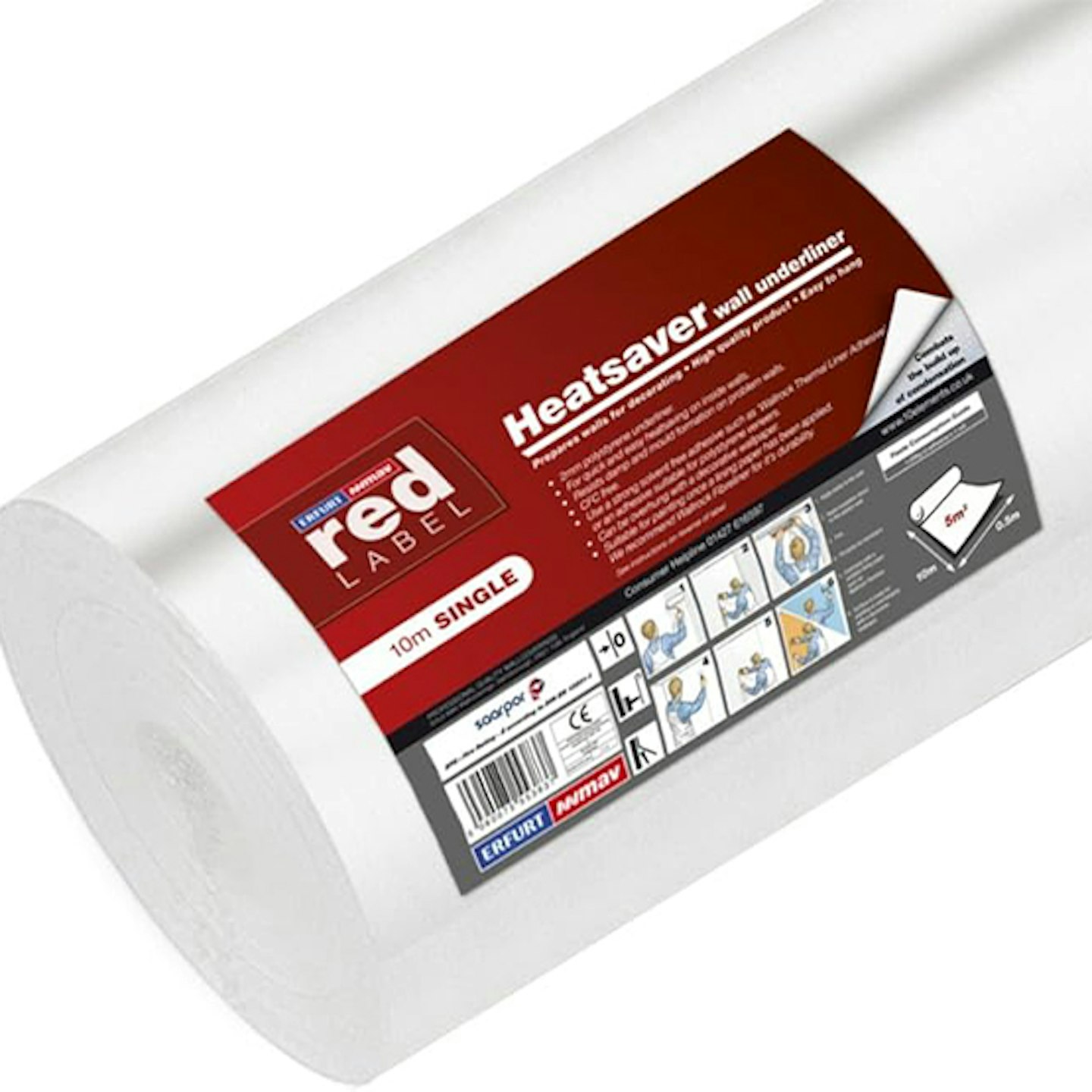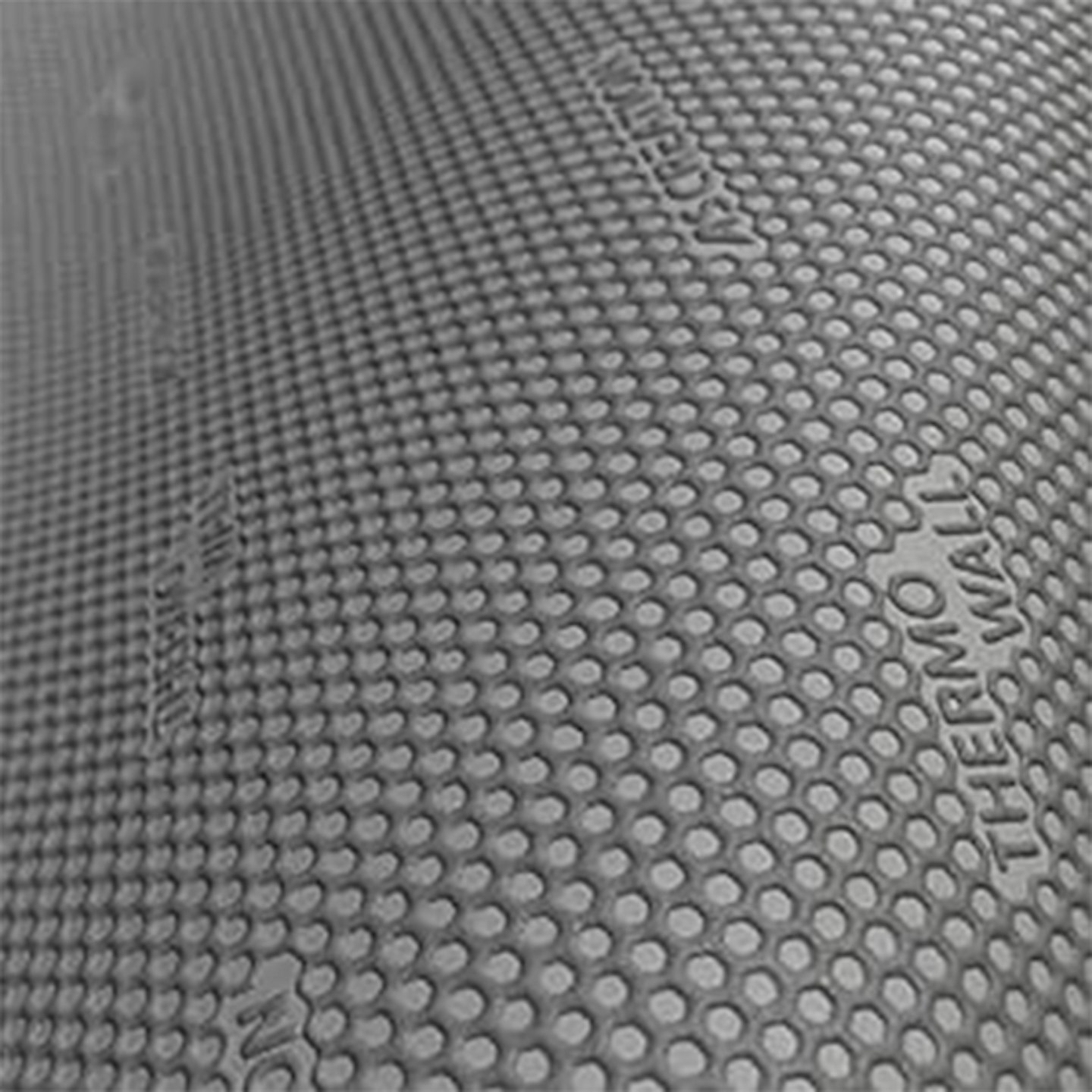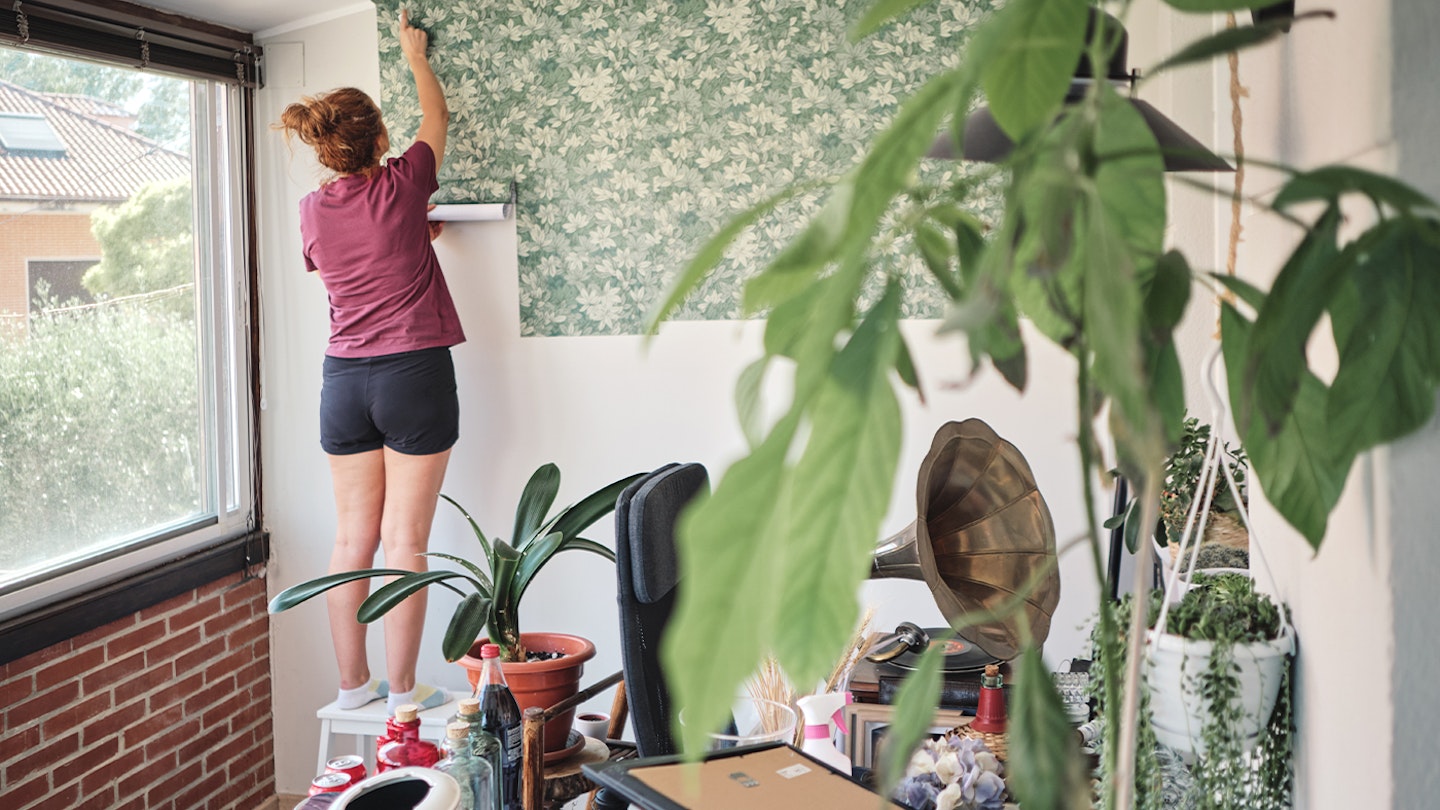Keeping our homes well insulated all year round with some thermal wallpaper is a brilliant way to help keep heating bills down, as well as keeping the home cool in the summer.
The good news is, than unlike other insulation techniques, thermal wallpaper is fairly cheap and easy to add to any home without the need for a large investment or big structural changes.
What is thermal wallpaper?
Thermal wallpaper can come in a range of different forms but essentially, a thermal wallpaper or lining provides an extra layer of insulation to your rooms, acting as a warm blanket to each room making it harder for heat to escape the room. It can come in the form of wallpaper, lining paper and thermal liners and is relatively cheap.
Although it’s not the most perfect solution to poor insulation compared to other energy saving gadgets, it’s generally better than nothing and can be a good option if you’re struggling from condensation and mould growth.
What are the benefits of using thermal wallpaper?

It’s inexpensive
Compared to other insulation solutions, thermal wallpaper is relatively inexpensive depending on what type and what brand you buy. You can pick up a 10m roll of thermal liner for as little as £15 while there are other, more expensive rolls that can cost over £100.
It gives your wall a smoother finish
Plaster and wall surfaces can crack and look tired overtime, so an insulating wallpaper is a great option to add a smooth finish to your walls ready for decorating. It’s also a cheaper alternative to skimming plaster to make it smoother. You then also get an added benefit of making the room warmer.
There is a noticeable difference
Although there are better alternatives, the room will feel instantly and noticeably warmer once lined with a thermal wallpaper. Particularly on external facing walls. On internal walls, thicker thermal wallpaper can also provide the added bonus of a little sound insulation too which is ideal for flats or attached houses as well as people working from home who need a little more sound insulation.
This is because thermal wallpaper is designed to absorb heat a lot quicker than regular wallpaper or paint, meaning you shouldn’t have to turn your heating up quite as high so should hopefully save you some pennies on your energy bills too!
Are there any downsides?

It’s hard to hang
Unlike regular wallpaper, thermal wallpaper is much thicker than standard wallpaper and you’ll also need a special adhesive to make it stick which can cost more than regular wallpaper paste. Particularly, on the corners and edges of the wallpaper, you need to be extra careful when hanging to ensure a neat fit.
Easy to damage
Thermal wallpaper is very easy to dent so take extra care when decorating over it or moving furniture against it. If you do dent it, it will impact its effectiveness so should need repairing.
It has a fairly short lifespan
Compared to more permanent insulation solutions which can really boost your homes efficiency, thermal wallpaper is considered more of a short fix solution, with a lifespan of around 5-10 years. If you plan to be in your home much longer than that or want to add some real value with effective insulation, then more permanent and effective solutions should be considered.
Is it suitable for year round use?
You might be worrying that hanging thermal wallpaper in your home will make you too hot in the summer, but actually, it’s ideal for year round use.
That’s because it also works to regulate your home’s temperature in the summer too, working to trap heat out in the summer months.
How much money could it save me on energy bills?
When you hang thermal wallpaper, you’ll notice you might not need to turn your heating up quite as high to take off the chill, saving you both energy and money on your heating bills. Even if you just line all of your external walls with a thermal liner, it could reduce your energy consumption by up to 35% having a big impact on your heating bills.
What’s the best thermal wallpaper to buy?
There are many different types of thermal wallpaper and thermal linings you can purchase depending on your home and own personal needs. Here are a few popular choices you may want to consider.
 B&Q
B&Qwww.diy.com
The most popular choice from the Wallrock range of thermal liners, this is designed to make your room heat up faster to create a more comfortable environment without having to turn your heating up. It's also durable, helps prevent condensation and covers damaged plaster easily.
One customer said: "Bit difficult to work with and need sharp scissors / knife to cut which it blunts over time. Also uses a lot of the specialist paste, but it sticks well consisting the weight!
The room now gets warm with the central heating (too hot actually, which it’s never done before!). Heat is also retained for a while after the heating has knocked off, it never did this before and lost heat instantly. Expensive, but it does work!"
Pros
- Helps prevent condensation
- Can half room heat up time
- Durable
Cons
- Difficult to hang
| Coverage: | 7.5m² |
| Finish: | Matt |
| Paintable: | Yes |
| Length: | 10m |
| Width: | 75cm |
| Wallpaper insulation grade: | 1700 grade |
- Energy saving
- Faster room warm up
- Combats condensation and mould
- Covers and reinforces damaged walls
- Smooths out light textures
- Allows walls to breathe
- Contains no PVC or glass fibre
- Long service life
 B&Q
B&Qwww.diy.com
Ideal for a quick fix to prevent damp and mould, this is slightly easier to work with compared to other liners and is designed to be more of a quick fix solution. It can also be helpful to smooth out damaged plaster and surfaces. It can be painted but lining paper needs applying over the top before doing so.
One customer said: "Great for covering up rough walls and insulating made a big difference in our old cottage which has solid walls , very easy to use just take your time , also put lining paper over the top."
Pros
- Easy to cut
- Helps combat damp and mould
Cons
- Can be quite fragile to work with meaning it's time consuming
| Coverage: | 5m² |
| Paintable | No |
| Length: | 10m |
| Width: | 50cm |
| Wallpaper insulation grade | 800 grade |
- 2mm Wall underliner
- Resists damp and mould formation on problem walls
- CFC free
- Combats the build up of insulation
- Length 10M x Width 0.5M
- Coverage (per roll) 5m2
- Use a strong solvent free adhesive suitable for polystyrene veneers
- Can be overhung with a decorative wallpaper
 B&Q
B&Qwww.diy.com
This thermal lining paper promises to reduce heat loss in your room by up to 18% which can feel like a real difference in the winter. It also works to help wall surfaces feel warmer to the touch and is designed to be painted over or have other wallpaper covering it.
Pros
- Helps noise reduction
- Easy to work with
- Paintable
Cons
- No customer reviews
| Coverage: | 5.32m² |
| Durability: | Medium duty |
| Finish: | Matt |
| Paintable: | Yes |
| Length: | 1.01m |
| Width: | 53cm |
| Wallpaper insulation grade | 800 grade |
| Washable: | Yes |
- Helps to reduce heat loss in rooms by up to 18%.
- Helps to save energy thanks to a shorter heating phase. Contribution to protecting the environment.
- Perceptibly warm surface. Pleasant, skin-friendly fabric. Breathable.
- Easy and fast to work with. Can be pasted over with another wallpaper or painted over.
- Covers up small imperfections and cracks.
- Reduces pigmentation for subsequent wallpapering.
- Helps to reduce noise and is impact-resistant.

www.diy.com
At 4mm thick, this thermal lining paper is a little thicker than some of the others for some real effective wall insulation. It also helps reduce condensation and mould and is made responsibly using responsibly sourced, Forest Friendly paper.
One customer said: "I used some of this a few years ago, and looking to buy more. Some of the reviews make me wonder if they followed the instructions and also used experience. Clean the walls first. If new plaster, seal it with some emulsion. Always use the recommended glue, it's like thick overlap adhesive. Use plenty of it as you move across the wall, and be careful of it drying out before you put the paper on! It is difficult due to it trying to stay curved, but it will stick flat. Marking to cut as it is applied can break the polysterene, but the paper holds it together. The 'problem' is, it is thick stuff, not like wallpaper to hang."
Pros
- Thicker than others
- Combats condensation and mould
Cons
- Difficult to hang
How to hang up thermal wallpaper?
If you’re already confident when it comes to hanging regular wallpaper, then you’ll probably be okay hanging thermal wallpaper. If however you’ve never hung wallpaper, it might be worth getting some help from a family member or getting a professional decorator in to make sure it’s hung right.
1. Measure up – start by measuring from the top of the wall down (this is called the drop) to work out how much paper you’ll need. Then cut out the lengths on your decorating table, making sure there isn’t too much leftover trim at the bottom. We’d advise taking your measurements a few times to make sure you’ve got it right.
2. Paste the wall – taking your special thermal wallpaper adhesive, paste the wall you want to paper using a roller or brush.
3. Apply your paper – Slide your insulating wallpaper into place and stick down using a brush to get rid of any air. Using a sharp line like a steel ruler or spirit level, place this up to the edges to easily see what excess needs removing with a sharp knife.
Can you paint or hang other wallpaper over thermal wallpaper?
You are able to paint or wallpaper over most thermal wallpaper or lining but this depends on the specific brand you buy. It’s always worth checking the instructions on your wallpaper to make sure you are okay to wallpaper or paint over it before buying if that’s what you want to do.
Lorna White is a Senior Digital Writer at Yours.co.uk. She was previously a writer at Yours Magazine writing features and news stories before joining the digital team. Lorna loves the great British countryside and likes to spend her spare time out and about in her home of Nottinghamshire walking her dog, Pippin.
